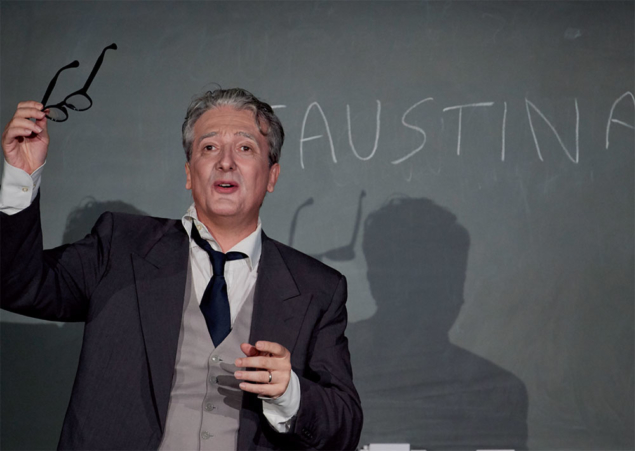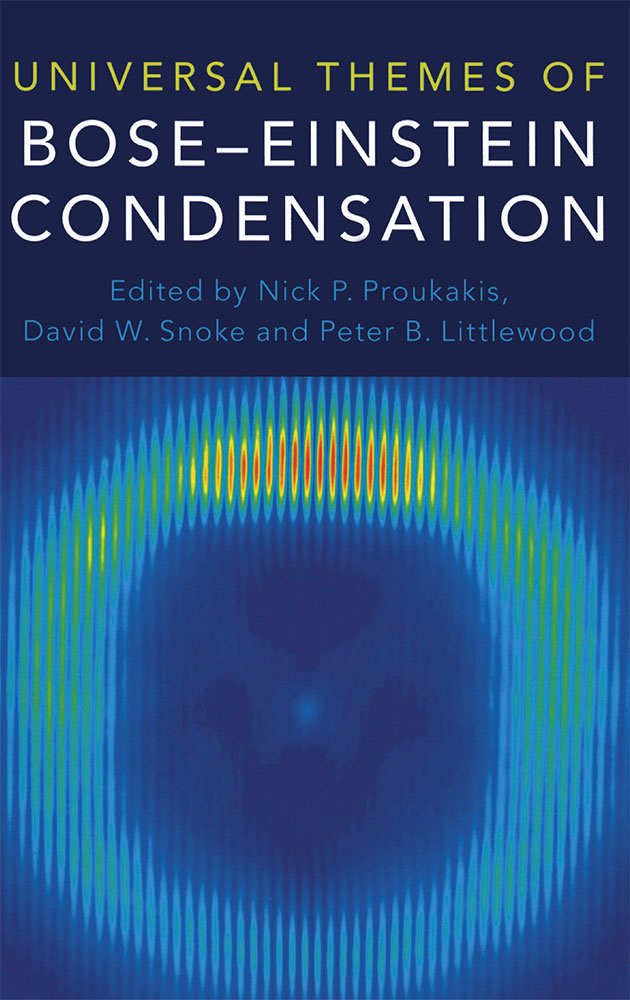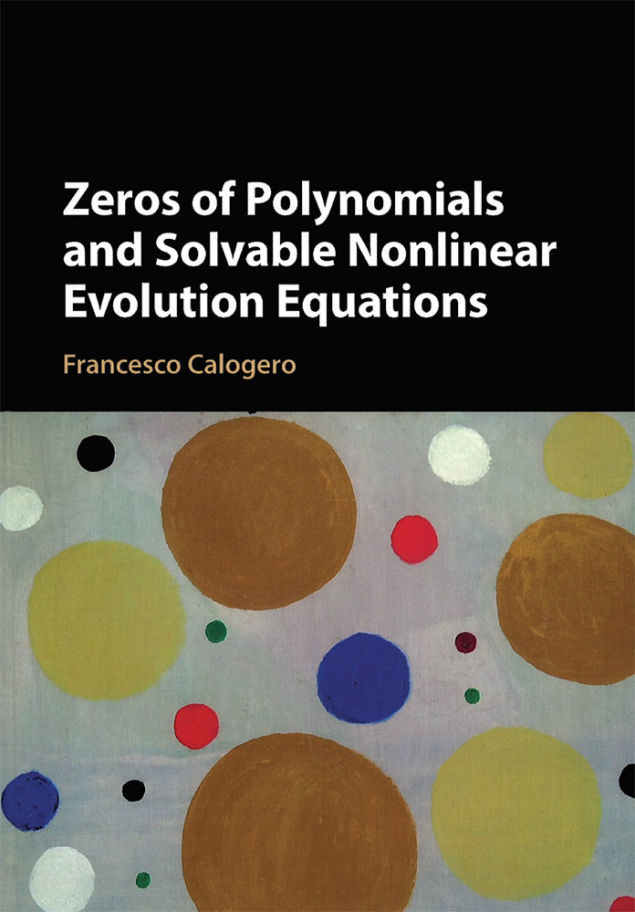Lost in Math – How beauty leads physics astray
by Sabine Hossenfelder
Basic Books

In Lost in Math, theoretical physicist Sabine Hossenfelder embarks on a soul-searching journey across contemporary theoretical particle physics. She travels to various countries to interview some of the most influential figures of the field (but also some “outcasts”) to challenge them, and be challenged, about the role of beauty in the investigation of nature’s laws.
Colliding head-on with the lore of the field and with practically all popular-science literature, Hossenfelder argues that beauty is overrated. Some leading scientists say that their favourite theories are too beautiful not to be true, or possess such a rich mathematical structure that it would be a pity if nature did not abide by those rules. Hossenfelder retorts that physics is not mathematics, and names examples of extremely beautiful and rich maths that does not describe the world. She reminds us that physics is based on data. So, she wonders, what can be done when an entire field is starved of experimental breakthroughs?
Confirmation bias
Nobel laureate Steven Weinberg, interviewed for this book, argues that experts call “beauty” the experience-based feeling that a theory is on a good track. Hossenfelder is sceptical that this attitude really comes from experience. Maybe most of the people who chose to work in this field were attracted to it, in the first place, because they like mathematics and symmetries, and would not have worked in the field otherwise. We may be victims of confirmation bias: we choose to believe that aesthetic sense leads to correct theories; hence, we easily recall to memory all of the correct theories that possess some quality of beauty, while we do not pay equal attention to the counterexamples. Dirac and Einstein, among many, vocally affirmed beauty as a guiding principle, and achieved striking successes by following its guidance; however, they also had, as Hossenfelder points out, several spectacular failures that are less well known. Moreover, a theoretical sense of beauty is far from universal. Copernicus made a breakthrough because he sought a form of beauty that differed from those of his predecessors, making him think out of the box; and by today’s taste, Kepler’s solar system of platonic solids feels silly and repulsive.

Hossenfelder devotes attention to a concept that is particularly relevant to contemporary particle physics: the “naturalness principle” (see Understanding naturalness). Take the case of the Higgs mass: the textbook argument is that quantum corrections go wild for the Higgs boson, making any mass value between zero and the Planck mass a priori possible; however, its value happens to be closer to zero than to the Planck mass by a factor of 1017. Hence, most particle physicists argue that there must be an almost perfect cancellation of corrections, a problem known as the “hierarchy problem”. Hossenfelder points out that implicit in this simple argument is that all values between zero and the Planck mass should be equally likely. “Why,” she asks, “are we assuming a flat probability, instead of a logarithmic (or whatever other function) one?” In general, we say that a new theory is necessary when a parameter value is unlikely, but she argues that we can estimate the likeliness of that value only when we have a prior likelihood function, for which we would need a new theory.
New angles
Hossenfelder illustrates various popular solutions to this naturalness problem, which in essence all try to make small values of the Higgs mass much more likely than large ones. She also discusses string theory, as well as multiverse hypotheses and anthropic solutions, exposing their shortcomings. Some of her criticisms may recall Lee Smolin’s The Trouble with Physics and Peter Woit’s Not Even Wrong, but Hossenfelder brings new angles to the discussion.
This book comes out at a time when more and more specialists are questioning the validity of naturalness-inspired predictions. Many popular theories inspired by the naturalness problem share an empirical consequence: either they manifest themselves soon in existing experiments, or they definitely fail in solving the problems that they were invented for.
Hossenfelder describes in derogatory terms the typical argumentative structure of contemporary theory papers that predict new particles “just around the corner”, while explaining why we did not observe them yet. She finds the same attitude in what she calls the “di-photon diarrhoea”, i.e., the prolific reaction of the same theoretical community to a statistical fluctuation at a mass of around 750 GeV in the earliest data from the LHC’s Run 2.
The author explains complex matters at the cutting edge of theoretical physics research in a clear way, with original metaphors and appropriate illustrations. With this book, Hossenfelder not only reaches out to the public, but also invites it to join a discourse that she is clearly passionate about. The intended readership ranges from fellow scientists to the layperson, also including university administrators and science policy makers, as is made explicit in an appendix devoted to practical suggestions for various categories of readers.
While this book will mostly attract attention for its pars destruens, it also contains a pars construens. Hossenfelder argues for looking away from the lamppost, both theoretically and experimentally. Having painted naturalness arguments as a red herring that drives attention away from the real issues, and acknowledging throughout the book that when data offer no guidance there is no other choice than following some non-empirical assessment criteria, she advocates other criteria that deserve better prominence, such as the internal consistency of the theoretical foundations of particle physics.
As a non-theorist my opinion carries little weight, but my gut feeling is that this direction of investigation, although undeniably crucial, is not comparably “fertile”. On the other hand, Hossenfelder makes it clear that she sees nothing scientific in this kind of fertility, and even argues that bibliometric obsessions played a big role in creating what she depicts as a gigantic bibliographical bubble. Inspired by that, Hossenfelder also advises learning how to recognise and mitigate biases, and building a culture of criticism both in the scientific arena and in response to policies that create short-term incentives, going against the idea of exploring less conventional ideas. Regardless of what one may think about the merits of naturalness or other non-empirical criteria, I believe that these suggestions are uncontroversially worthy of consideration.
Andrea Giammanco, UCLouvain, Louvain-la-Neuve, Belgium.
Amaldi’s last letter to Fermi: a monologue
Theatre, CERN Globe
11 September 2018

On the occasion of the 110th anniversary of the birth of Italian physicist Edoardo Amaldi (1908–1989), CERN hosted a new production titled “Amaldi l’italiano, centodieci e lode!” The title is a play on words concerning the top score at an Italian university (“110 cum laude”) and the production is a well-deserved recognition of a self-confessed “ideas shaker” who was one of the pioneers
in the establishment of CERN, the European Space Agency (ESA) and the Italian National Institute for Nuclear Physics (INFN).
The nostalgic monologue opens with Amaldi, played by Corrado Calda, sitting at his desk and writing a letter to his mentor, Enrico Fermi. Set on the last day of Amaldi’s life, the play retraces some of his scientific, personal and historical memories, which pass by while he writes.
It begins in 1938 when Amaldi is part of an enthusiastic group of young scientists, led by Fermi and nicknamed “Via Panisperna boys” (boys from Panisperna Road, the location of the Physics Institute of the University of Rome). Their discoveries on slow neutrons led to Fermi’s Nobel Prize in Physics that year.
Then, suddenly, World War II begins and everything falls apart. Amaldi writes about his frustrations to his teacher, who had passed away but is still close to him. “While physicists were looking for physical laws, Europe sank into racial laws,” he despairs. Indeed, most of his colleagues and friends, including Fermi who had a Jewish wife, moved to the US. Left alone in Italy, Amaldi decided to stop his studies on fission and focus on cosmic rays, a type of research that required less resources and was not related to military applications.
Out of the ruins
After World War II, while in Italy there was barely enough money to buy food, the US was building state-of-the-art particle-physics detectors. Amaldi described his strong temptation to cross the ocean, and re-join with Fermi. However, he decided to stay in war-torn Europe and help European science grow out of the ruins. He worked to achieve his dream of “a laboratory independent from military organisations, where scientists from all over the world could feel at home” – today know as CERN. He was general secretary of CERN between 1952 and 1954, before its official foundation in September 1954.
This beautiful monologue is interspersed by radio messages from the epoch, which announce salient historical facts. These create a factual atmosphere that becomes less and less tense as alerts about the Nazi’s declarations and bombs are replaced by news about the first women’s vote, the landing of the first person on the Moon, and disarmament movements.
Written and directed by Giusy Cafari Panico and Corrado Calda, the play was composed after consulting with Edoardo’s son, Ugo Amaldi, who was present at the inaugural performance. The script is so rich in information that you leave the theatre feeling you now know a lot about scientific endeavours, mindsets and the general zeitgeist of the last century. Moreover, the play touches on some topics that are still very relevant today, including: brain drain, European identity, women in science and the use of science for military purposes.
The event was made possible thanks to the initiative of Ugo Amaldi, CERN’s Lucio Rossi, the Edoardo Amaldi Association (Fondazione Piacenza e Vigevano, Italy), and several sponsors. The presentation was introduced by former CERN Director-General Luciano Maiani, who was Edoardo Amaldi’s student, and current CERN Director-General Fabiola Gianotti, who expressed her gratitude for Amaldi’s contribution in establishing CERN.
Letizia Diamante, CERN.
Topological and Non-Topological Solitons in Scalar Field Theories
by Yakov M Shnir
Cambridge University Press

In the 19th century, the Scottish engineer John Scott Russell was the first to observe what he called a “wave of transition” while watching a boat drawn along a channel by a pair of horses. This phenomenon is now referred to as a soliton and described mathematically as a stable, non-dissipative wave packet that maintains its shape while propagating at a constant velocity.
Solitons emerge in various nonlinear physical systems, from nonlinear optics and condensed matter to nuclear physics, cosmology and supersymmetric theories.
Structured in three parts, this book provides a comprehensive introduction to the description and construction of solitons in various models. In the first two chapters of part one, the author discusses the properties of topological solitons in the completely integrable Sine-Gordon model and in the non-integrable models with polynomial potentials. Then, in chapter three, he introduces solitary wave solutions of the Korteweg–de Vries equation, which provide an example of non-topological solitons.
Part two deals with higher dimensional nonlinear theories. In particular, the properties of scalar soliton configurations are analysed in two 2+1 dimension systems: the O(3) nonlinear sigma model and the baby Skyrme model. Part three focuses mainly on the solitons in three spatial dimensions. Here, the author covers stationary Q-balls and their properties. Then he discusses soliton configurations in the Skyrme model (called skyrmions) and the knotted solutions of the Faddev–Skyrme model (hopfions). The properties of the related deformed models, such as the Nicole and the Aratyn–Ferreira–Zimerman model, are also summarised.
Based on the author’s lecture notes for a graduate-level course, this book is addressed at graduate students in theoretical physics and mathematics, as well as researchers interested in solitons.
Virginia Greco, CERN.
Universal Themes of Bose–Einstein Condensation
by Nick P Proukakis, David W Snoke and Peter B Littlewood
Cambridge University Press

The study of Bose–Einstein condensation (BEC) has undergone an incredible expansion during the last 25 years. Back then, the only experimentally realised Bose condensate was liquid helium-4, whereas today the phenomenon has been observed in a number of diverse atomic, optical and condensed-matter systems. The turning point for BEC came in 1995, when three different US groups reported the observation of BEC in trapped, weakly interacting atomic gases of rubidium-87, lithium-7 and sodium-23 within weeks of one another. These studies led to the 2001 Nobel Prize in Physics being jointly awarded to Eric Cornell, Wolfgang Ketterle and Carl Wieman.
This book is a collection of essays written by leading experts on various aspects and in different branches of BEC, which is now a broad and interdisciplinary area of modern physics. Composed of four parts, the volume starts with the history of the rapid development of this field and then takes the reader through the most important results.
The second part provides an extensive overview of various general themes related to universal features of Bose–Einstein condensates, such as the question of whether BEC involves spontaneous symmetry breaking, of how the ideal Bose gas condensation is modified by interactions between the particles, and the concept of universality and scale invariance in cold-atom systems. Part three focuses on active research topics in ultracold environments, including optical lattice experiments, the study of distinct sound velocities in ultracold atomic gases – which has shaped our current understanding of superfluid helium – and quantum turbulence in atomic condensates.
Part four is dedicated to the study of condensed-matter systems that exhibit various features of BEC, while in part five possible applications of the study of condensed matter and BEC to answer questions on astrophysical scales are discussed.
Virginia Greco, CERN.
Zeros of Polynomials and Solvable Nonlinear Evolution Equations
by Francesco Calogero
Cambridge University Press

This concise book discusses the mathematical tools used to model complex phenomena via systems of nonlinear equations, which can be useful to describe many-body problems.
Starting from a well-established approach to solvable dynamical systems identification, the author proposes a novel algorithm that allows some of the restrictions of this approach to be eliminated and, thus, identifies more solvable/integrable N-body problems. After reporting this new differential algorithm to evaluate all the zeros of a generic polynomial of arbitrary degree, the book presents many examples to show its application and impact. The author first discusses systems of ordinary differential equations (ODEs), including second-order ODEs of Newtonian type, and then moves on to systems of partial differential equations and equations evolving in discrete time-steps.
This book is addressed to both applied mathematicians and theoretical physicists, and can be used as a basic text for a topical course for advanced undergraduates.
Virginia Greco, CERN.





